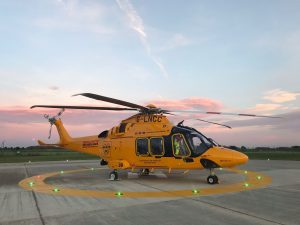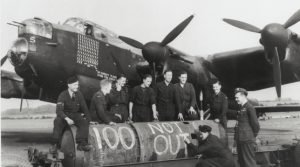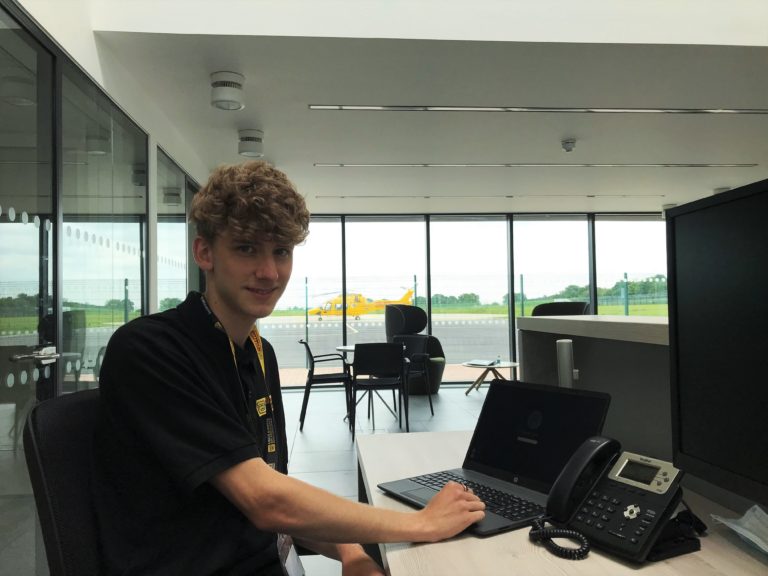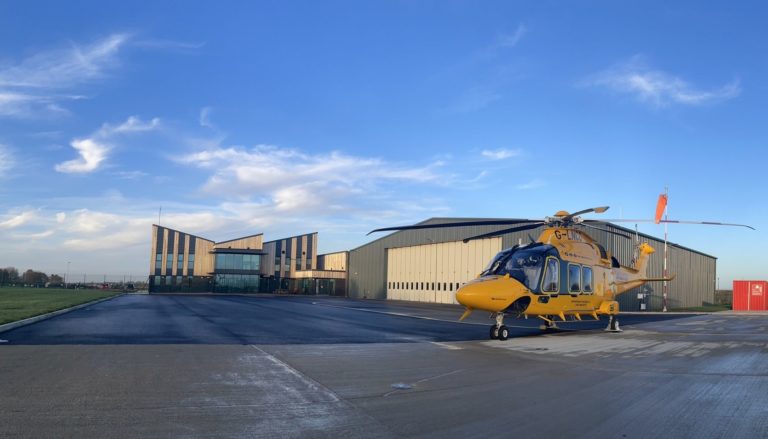A Lancaster, a Kookaburra and a helipad
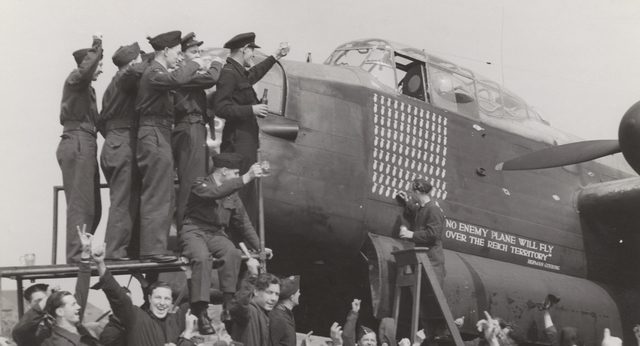
A Lancaster, a Kookaburra and a helipad
On 12 May 1944, a rather special Lancaster Bomber returned to its site at RAF Waddington celebrating its 100th mission. Eighty-years-later LNAA’s helicopter resides on that same site, celebrating its 30th birthday.
When LNAA moved over the fence from RAF Waddington to our new HQ, we needed a name for the helipad.
LNAA pilot, Cpt Tim Taylor began to investigate the history of the old aircraft dispersal site which we had built our new helipad on and soon realised he had uncovered a fascinating story…
The kookaburras
No 467 Squadron was a Royal Australian Air Force bomber squadron based at RAF Waddington. Equipped with Avro Lancaster bombers, its crew flew operations in Occupied Europe until the end of the Second World War.
The squadron’s insignia was of a kookaburra with a snake in its beak and its motto – Recidite Adversarius Atque Ferociter, loosely translated as: “Your opponents will retreat because of your courageous attack.”
And the squadron, which was part of the No.5 Group, Bomber Command, certainly lived up to its motto as it gained a reputation for accurate raids on Germany, France and Italy between 1943 and 1945.
Every Lancaster Bomber in the squadron had its own dispersal site. These were areas adjacent to the airfield runway used for parking in widely separated positions to protect them from enemy air attacks.
Today, LNAA’s helipad is on one of these dispersal sites. After discussions with RAF Waddington, LNAA was given permission to call the helipad Kookaburra in homage to the crews who operated from here before us.
A very special aircraft
On the night of 11th/12thMay, 1944 a Lancaster Bomber embarked on her 100th mission, the first allied bomber to reach this milestone.
Martin Willoughby tells the story of his father’s involvement on the night the Lancaster made history.
“My late father, Ted, a Bomber Command veteran, and Lancaster Engine Fitter served on the 467 Squadron’s famous Lancaster S-Sugar R5868.
“The plane’s nose art depicted rows of bombs, one for each operation completed. Over the course of the war, the rows grew as Sugar consistently returned from each mission.
“Flying with Bomber Command had the highest rate of attrition of any branch of the Armed Forces. If you survived, you were deemed incredibly lucky as 3,932 of the 7,377 Lancasters built were lost in action. Crews were superstitious and soon started to clamour to fly in Sugar, believing that she would bring them safely home.
“Even when stood on its dispersal site, Sugar seemed undefeatable. One day, when Ted was working in the cockpit, with the aircraft being loaded with bombs, he heard the sound of heavy metal hitting tarmac. Looking out, he saw airmen running in all directions. A 4000lb bomb had fallen from the bomb bay but miraculously had not gone off!
“On 11th May 1944, Sugar left its dispersal site to undertake its 100th mission. Prior to loading the bombs, Ted chalked ‘100 not out’ on one of them.
“Sugar returned. It had sustained attacks from two German planes for 10 minutes but co-operation between crews in the skies enabled this veteran plane to escape.
“Sugar went on to complete an incredible 137 operations by the end of the war.
“During the mid-1960s Ted embarked on his own mission to find his beloved plane. In 1969 he heard about a Lancaster stood at the entrance to RAF Scampton that may be Sugar. Turning into the gates, the familiar nose art with the bombs came into view. Ted could not believe it! His Lancaster had survived everything, even the scrap yard, where so many Lancasters went to after the War.
“Thanks to Ted, ‘Sugar’ was fully restored and today, this legend from WW2 proudly dominates the entrance to Bomber Command Hall, RAF Museum Hendon.”
